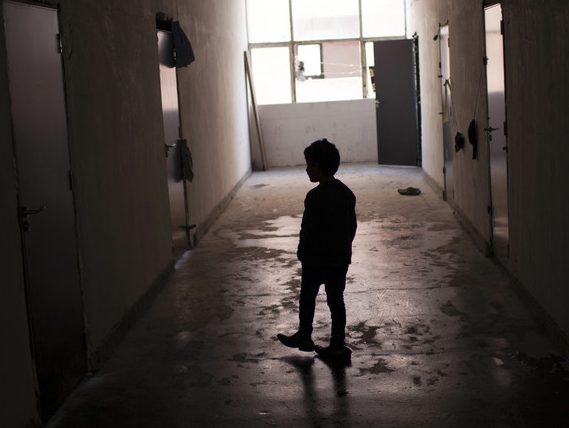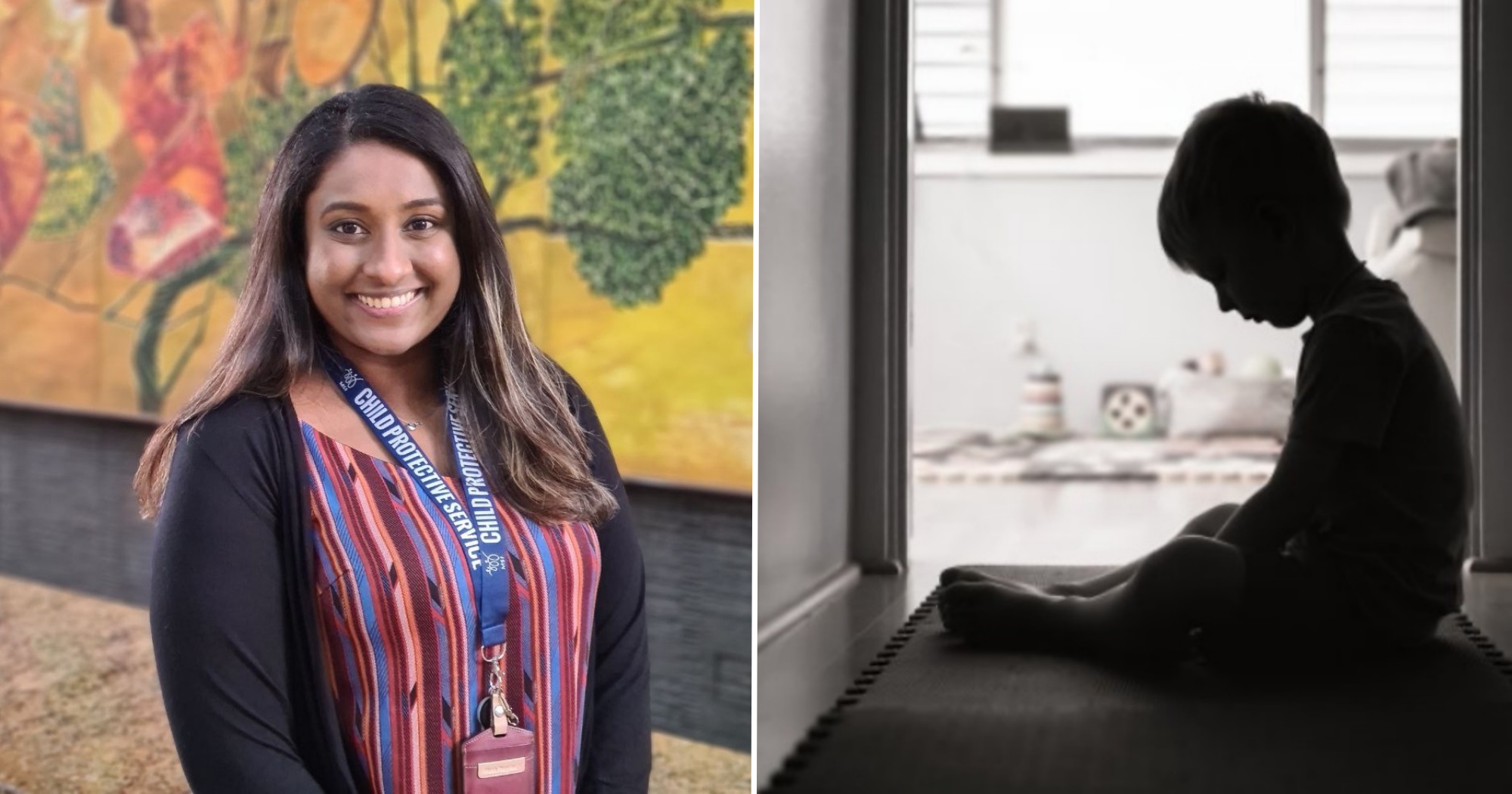Follow us on Telegram for the latest updates: https://t.me/mothershipsg
Stories of child abuse, especially those perpetrated by family members, are hard to stomach.
Over the years, accounts of some of the most heinous abuse inflicted on children have come to light: A couple who kept their toddler's remains in a pot for five years while lying to the authorities about her whereabouts, a man who sexually assaulted his daughter from the time she was 10, and parents who kept their five-year-old son in a cage and scalded him to death
Cases like these have ignited the public's rage and shock because it is unimaginable that people can do such things to their own flesh and blood.
""What really surprised me the most was the number of enquiries and reports of suspected abuse...That really surprised me," said S. Priyalatha, a Senior Child Protection Officer with the Ministry of Social and Family Development (MSF).
According to statistics published by MSF, the number of child protection investigations have risen steadily over the years.
In 2011, the Child Protective Service investigated 415 cases of child abuse. In 2020, that number tripled to 1,313.
Over the past decade, the highest rates of increase were seen in cases of sexual and physical abuse. Even then, the actual incidence of child abuse could be higher, because it tends to be underreported due to its sensitive nature, said Priya.
 The number of child protection investigations have risen steadily over the years. Image via
The number of child protection investigations have risen steadily over the years. Image via
Priya has been with the Child Protective Service (CPS) for two years now.
She started out as an intern with CPS when she was a Psychology undergraduate, and joined the service full time when she graduated, in part because she was inspired by the resilience of the officers whom she worked with.
"They had like different personalities, they had different engagement styles, but I could really see the resilience and perseverance as well as the courage they had, you know, to make the lives of these children better."
Despite the intense nature of the job, she felt drawn to their steeliness. "When I saw that, I told myself that I would like to be like that one day."
When children aren't safe in their own homes
Child Protective Service intervenes when it becomes clear that a child is facing harm from a household member.
Families are typically encouraged to resolve their issues with support from various community services like Family Service Centres or Family Violence Specialist Centres.
And so when CPS has to step in, it usually means that the situation has reached the stage where, in Priya's words, "there are serious concerns over a child’s safety and well-being or if there is a high risk of future harm".
She remembers her first case, where the children were suffering from extreme neglect.
When she visited the family, she found that the children had defecated around the house. The children were unkempt, moody, and displayed symptoms of trauma. The oldest child, who was subjected to harsh physical abuse, was withdrawn and had low self-esteem.
It was a case which clearly required some intervention. However, intervention by CPS isn't always as clear-cut as removing children from a home.
According to Priya, officers will assess the situation based on a number of factors. Type of abuse, the extent of the harm, and other complicating factors (for instance, the child's age) all come into play.
All things considered, CPS prefers to work together with parents to resolve the harmful living situation at home before even thinking about relocating the child.
"Removing the child is always the last resort. We always work towards family preservation," said Priya.
 Relocating a child is always the last resort, said Priya. Image via.
Relocating a child is always the last resort, said Priya. Image via.
Unfortunately, the mother from Priya's first case refused to work together with her and so the children had to be removed and sent to live with their grandmother.
Such cases have earned Child Protection Officers like Priya an unfair reputation for snatching children away from their families. Some have even called the officers "kidnappers".
"The reason why we remove a child is when home becomes unsafe for the child. We will interview the child, to find out what exactly has happened because we want to hear the child's voice. And the child's disclosure is paramount in CPS's work."
Hearing the child's side of the story enables CPS to kickstart an investigation to identify gaps in the family's living situation. They will then set out to resolve these issues, with the aim of reuniting the child with their family eventually.
Intrusive and emotional
A Child Protection Officer's work is to identify problems in a household and so, by nature, it is intrusive. They probe for issues that families would much rather keep locked away and hidden.
This intrusion is very unsettling for families involved, said Priya. It often results in emotional outbursts.
She recalled a safety planning session with a mother who, in a fit of anger, crushed the paper they were writing on, threw it aside, and screamed at Priya's face.
"You are trying to be empathetic and you are trying to be respectful to the family, but at the same time, you need to be very clear, you have to be very objective when making decisions concerning a child’s safety."
It's an emotionally demanding job, treading that fine line between empathy and objectivity, and managing the emotional strain from encountering cases of abuse on a regular basis.
Managing these demands is one of the challenges of the job, admitted Priya.
From her experience, having self-awareness helps. It is important for Child Protection Officers to be aware of their own emotional capacity and more crucially, their own symptoms of burnout.
"For me, I have extreme fatigue when I'm starting to burn out. So that's when I tell myself, okay, I am hitting below functional capacity."
Child Protection Officers are also trained to look out for symptoms of trauma in themselves, which might have been caused by a particularly distressing case.
"We have in-house professionals within CPS who are trained to provide a safe space for the CPO to share about their experiences or process the traumatic incident that has happened. Where necessary, CPOs can also tap on external help"
Despite these occupational hazards, Priya loves her job.
Over the years, she has developed certain traits, like being assertive yet empathetic, and handled situations that she never once thought she could. But more importantly, she treasures how her work can change the course of a child's life.
The first case she dealt with was also one where she saw this impact: After the children were sent to stay with their grandmother, they became more well-behaved and started their education again, eventually taking up leadership positions in school.
The biggest change was observed in the oldest child who became more confident and willing to share about himself.
Cases like this keep Priya going because she sees the meaning in her work.
"It's something that I really do wish: That all the children who come into CPS go on to lead better lives and pursue their hopes and dreams in the future."
Top image by Joshua Lee and via uq.edu.au
Follow and listen to our podcast here
If you like what you read, follow us on Facebook, Instagram, Twitter and Telegram to get the latest updates.
